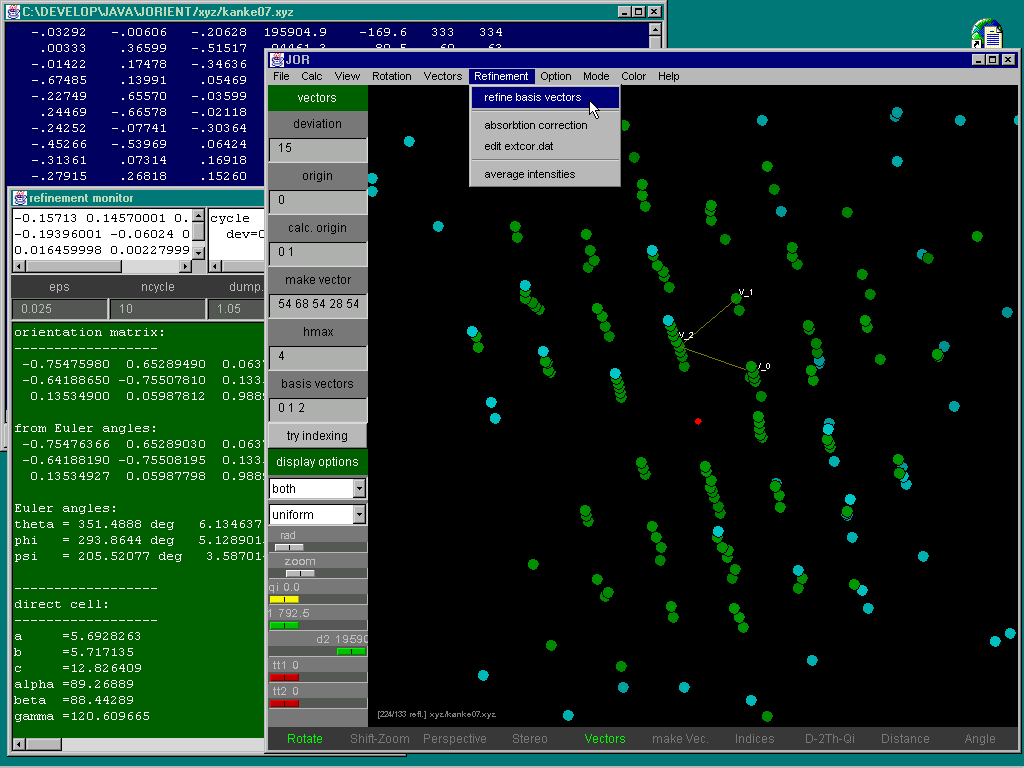
Reciprocal Space Visualizer
© Steffen Weber, 1998
JOR is a software for the 3D-visualization of the reciprocal lattice points for crystals/quasicrystals.
purpose for diffractometer data:
When collecting X-ray diffraction data on a four-circle
diffractometer, one starts with an automated peak searching
process. The found peaks then shall help in establishing the
orientation matrix so that the diffractometer control software
can find & scan all the peaks which are given in a peak input
list.
Since the diffractometer accepts 3D coordinates only we
have to convert the five or six integer indices of
the quasicrystal (h1 h2 h3 h4 h5 h6 in
contrast to h k l for crystals) into
cartesian non-integer values by some section algorithm.
After some peaks have been found by the peak search process we
need to identify those reflections in terms of the higher-dimensional
integer indices.
Now this can be a very tedious exercise. JOR's task is to
simulate a 3D diffraction patterns and then overlay the peaks
from the peak search and rotate/scale each set until they
coincide. Then we obtain the indices for the found peaks and then
we can calculate the orientation matrix so we may proceed with
the actual data collection.
The calculated diffraction pattern can be modified in realtime (varying
slider settings for the maximum internal space component, range
of interplanar spacings, 2Theta range and lattice parameters.
purpose for pseudo Weissenberg data:
JOR has been extended to import full sets of reconstructed 3D
data (reciprocal space points reconstructed from pseudo
Weissenberg data). One can then select a number of basis vectors
and try to index all spots. A least squares refinement routine
refines those basis vectors and the origin. Then the lattice
parameters and the orientation matrix are determined.
An absorbtion correction routine for general convex polyhedral
crystal shapes has been implemented. This uses the Gauss
integration for usually 10 divisions along each axis (x,y,z).
This Java-coded routine corrects about ten reflections/second on
a 300 MHz machine for 10x10x10 divisions. The crystal shapes can
easily be defined using my program JSHAPE.
